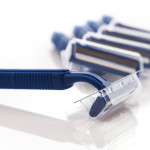 Many people shave or groom their pubic hair for personal reasons, including ideas about attractiveness, comfort, and what a sexual partner may desire. It is important to know that there are no medical benefits to removing pubic hair, and the decision to do it is personal.
Many people shave or groom their pubic hair for personal reasons, including ideas about attractiveness, comfort, and what a sexual partner may desire. It is important to know that there are no medical benefits to removing pubic hair, and the decision to do it is personal.
Here are some risks associated with shaving pubic hair:
- Genital itching or burning
- Injuries including cuts or scrapes
- Rashes including “razor burn” or reactions to shaving products
- Bumps including ingrown hairs or folliculitis (infection of a hair follicle)
- Skin infections or abscesses
There are also studies that show removing pubic hair might increase your risk of getting or exposing a partner to sexually transmitted infections. This could be because of cuts (sometimes even too small to see) or skin irritation caused by hair removal, especially shaving. Make sure to avoid sexual contact if you have open cuts, and don’t share razors with friends or sexual partners.
If you decide to shave your pubic hair, there are some things you can do to lower your risk:
- Trim longer hairs before shaving
- Apply warm water to skin before shaving
- Lather skin with shaving cream or gel before shaving
- Always use a clean razor blade
- Shave lightly in the direction that the hair grows. Limit the amount of times you shave over each area (not more than 2 times).
- Stretch skin slightly while shaving to avoid cuts. Be careful not to pull too tightly because this can cause ingrown hairs.
- After shaving, wash skin with soap and water. Lightly pat skin dry after washing and apply moisturizer.
If you have questions about pubic hair removal, be sure to talk to your health care provider.
 Young Men's Health
Young Men's Health